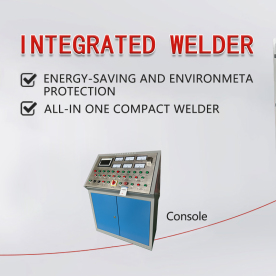[High frequency welder for metal]Understanding the Importance and Advantages of High Frequency Welders for Metal: Revolutionizing the Welding Industry
News 2024-8-19

Understanding the Importance and Advantages of High Frequency Welders for Metal: Revolutionizing the Welding Industry

Understanding the Importance and Advantages of High Frequency Welders for Metal: Revolutionizing the Welding Industry
High frequency welding, as the name suggests, utilizes high frequency electricity to create a weld, primarily used in joining thin-walled metal tubes and pipes. The process is particularly notable for its ability to produce clean, strong, and consistent welds without the need for filler materials. This technology operates on the principle of electromagnetic induction, generating heat from the metal itself as the current flows through it, leading to effective melting and bond formation at the weld interface.
One of the primary advantages of high frequency welders for metal is their efficiency. Traditional welding methods often require extensive preparation and finishing work. However, high frequency welders streamline this process, resulting in faster production rates. With minimal set-up times and quicker welding cycles, manufacturers can significantly enhance their productivity.
Moreover, high frequency welding offers superior control over the welding parameters, allowing skilled operators to adjust settings such as voltage, speed, and frequency. This level of control is critical when processing different metal types, thicknesses, and profiles. Consequently, the technology proves invaluable in industries ranging from automotive and aerospace to construction and energy, where precision is paramount.
In addition to speed and precision, the quality of welds produced using high frequency welders is remarkable. When executed correctly, high frequency welding results in a smooth, uniform seam that is less prone to defects and weaknesses such as porosity or cracking. This reliability fosters confidence in the finished products, which is particularly important in high-stakes applications like pressure vessels or pipelines. Manufacturers often find that using high frequency welders reduces the overall scrap rates, as fewer defective products are produced during the welding process.

Understanding the Importance and Advantages of High Frequency Welders for Metal: Revolutionizing the Welding Industry
Environmental considerations are another crucial factor in the growing popularity of high frequency welders for metal work. These systems typically require fewer resources and generate less waste than conventional welding techniques. The absence of fills or additional materials in the process not only reduces costs but also addresses environmental concerns regarding excess material consumption. This sustainable approach aligns with the growing industry trend towards greener practices, making high frequency welding an appealing alternative for conscientious manufacturers.
Despite the myriad benefits, it is essential to recognize that high frequency welding comes with its challenges. Operators must possess a sound understanding of how to calibrate machines for specific applications, and the initial investments in high frequency welding technology can be substantial. However, many manufacturers find that the long-term benefits — including reduced labor, material costs, and enhanced quality — ultimately surpass the initial obstacles.
In conclusion, high frequency welders for metal represent a compelling advancement in the welding industry, enhancing efficiency, quality, and sustainability. As industries continue to evolve, embracing innovative technologies will be crucial to staying competitive. Given the remarkable capabilities and benefits listed above, it is no surprise that high frequency welding is becoming a go-to solution for many metal fabrication applications. Whether for simple structures or complex applications, high frequency welders are transforming how we think about and execute welding processes, leading to a new era in metalworking.
